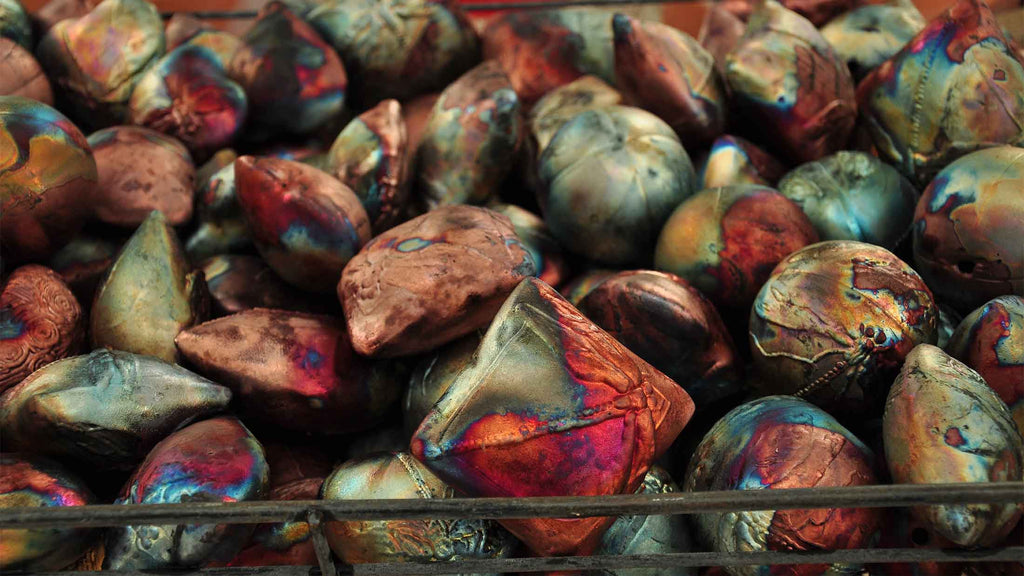Raku is an Unconventional Pottery Firing Technique.
Raku pottery begins just like your everyday pottery – wet clay is molded by hand, dried slowly, fired, cooled slowly, then glazed, and finally fired a second time. For normal pottery, to prevent breakage and glaze defects, it is critical a kiln cool slowly after firing.
But a Raku firing is not normal. Imperfection is the treasure! In the second firing, as soon as the piece reaches a certain temperature, and the silica glaze begins to melt and flow, long metal tongs are used to pull the red-hot pottery from the kiln to initiate an extreme thermic reaction.
Then to push the alternative technique even further, in addition to the thermal shock, a chemical reaction is introduced by placing the piece inside a lidded container filled with combustibles. The flammables immediately burst into flames and the lid is shut quickly to cut off the air supply.
 Inside the closed metal can, the frenzied flames lick and flail wildly in search of air. In a desperate quest to stay alive, the fire encircles and swaths each piece drawing air from the glaze. As the fire burns out, fluid smoke and lack of oxygen leave behind an unpredictable surface with delicate, colorful, and one-of-a-kind iridescent patterns.
Inside the closed metal can, the frenzied flames lick and flail wildly in search of air. In a desperate quest to stay alive, the fire encircles and swaths each piece drawing air from the glaze. As the fire burns out, fluid smoke and lack of oxygen leave behind an unpredictable surface with delicate, colorful, and one-of-a-kind iridescent patterns.
After a short time, the lid is removed, and the smoky embers and fiery artwork are doused with a spray of cold water to still the chaotic chemical and thermal reactions.
The Raku firing process at J. Davis Studio is meditative and requires mindful focus. When performed mindfully, there is little, if any breakage. The intense and labor-intensive procedure produces an organic, earthy and rustic splendor that only trial by fire can create - not unlike the imperfect treasure that's often hidden within us all.

